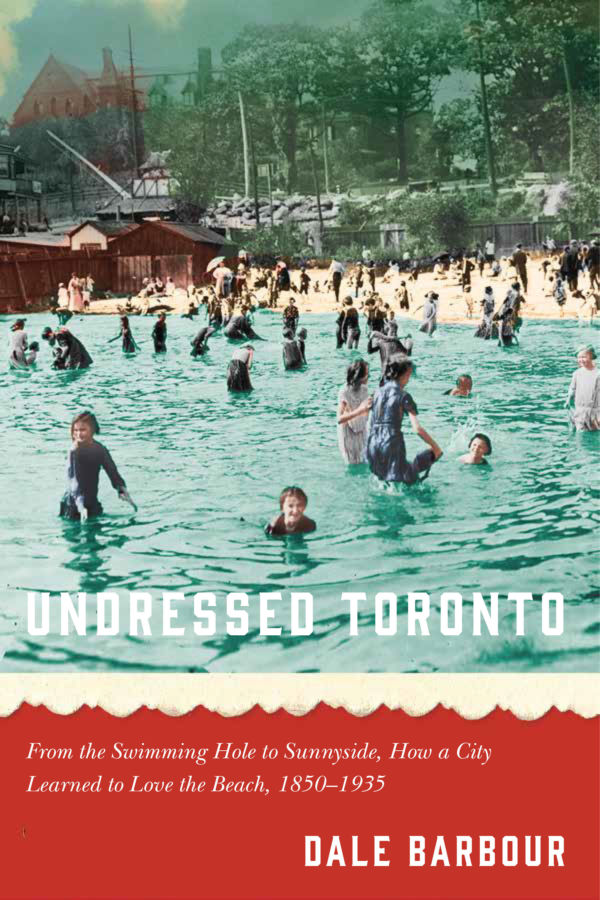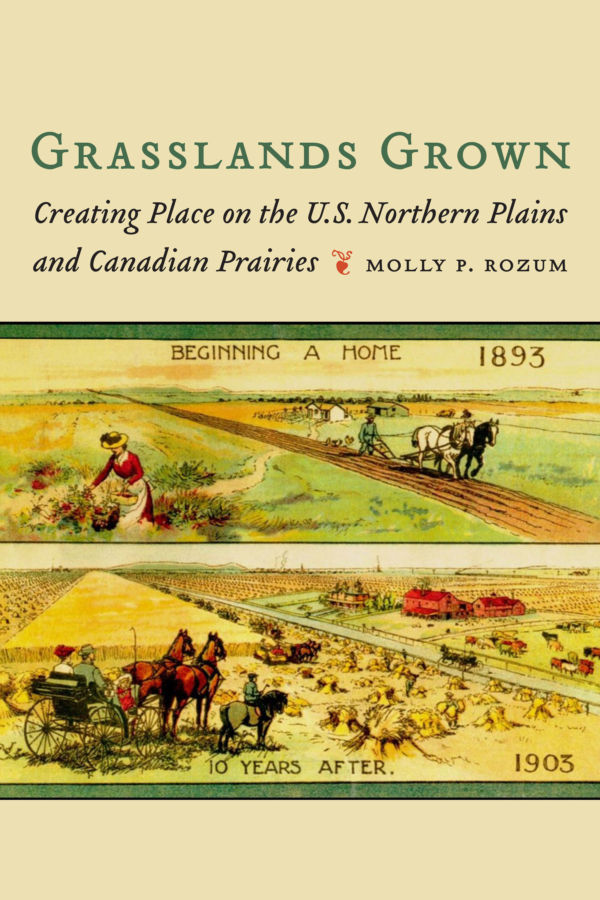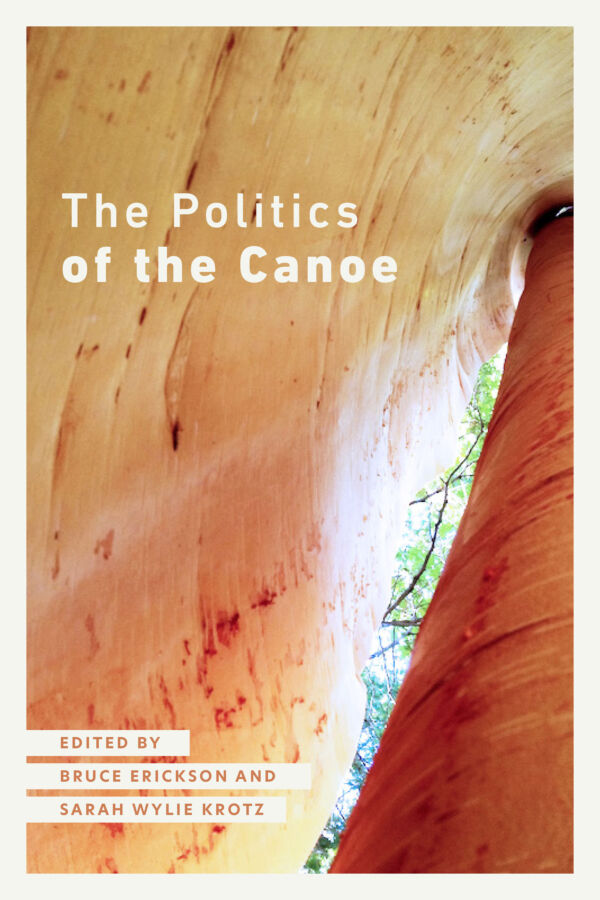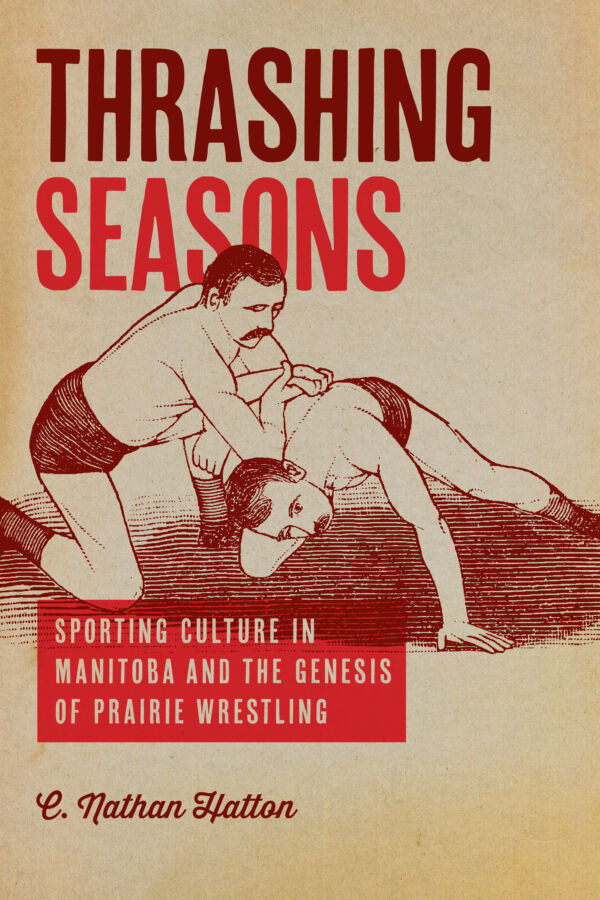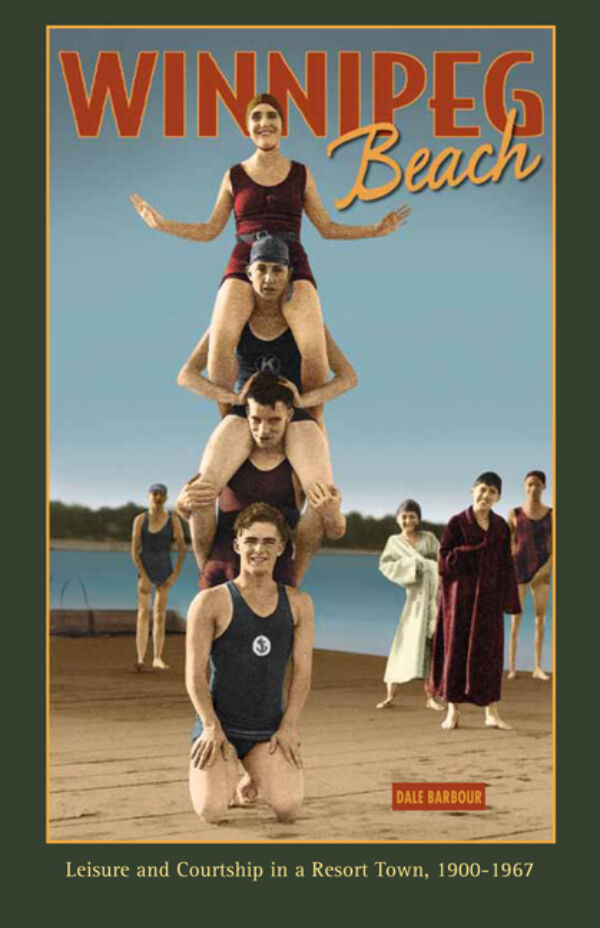Undressed Toronto
From the Swimming Hole to Sunnyside, How a City Learned to Love the Beach, 1850–1935
Overview
Undressed Toronto looks at the life of the swimming hole and considers how Toronto turned boys skinny dipping into comforting anti-modernist folk figures. By digging into the vibrant social life of these spaces, Barbour challenges narratives that pollution and industrialization in the nineteenth century destroyed the relationship between Torontonians and their rivers and waterfront. Instead, we find that these areas were co-opted and transformed into recreation spaces: often with the acceptance of indulgent city officials.
While we take the beach for granted today, it was a novel form of public space in the nineteenth century and Torontonians had to decide how it would work in their city. To create a public beach, bathing needed to be transformed from the predominantly nude male privilege that it had been in the mid-nineteenth century into an activity that women and men could participate in together. That transformation required negotiating and establishing rules for how people would dress and behave when they bathed and setting aside or creating distinct environments for bathing.
Undressed Toronto challenges assumptions about class, the urban environment, and the presentation of the naked body. It explores anxieties about modernity and masculinity and the weight of nostalgia in public perceptions and municipal regulation of public bathing in five Toronto environments that showcase distinct moments in the transition from vernacular bathing to the public beach: the city’s central waterfront, Toronto Island, the Don River, the Humber River, and Sunnyside Beach on Toronto’s western shoreline.
Reviews
"Undressed Toronto is a brilliant, fresh take on a subject that few other historians would consider worthy of consideration, one that sheds light on important processes of class and gender formation, environmental development, and popular cultural practices."
Craig Heron, Professor Emeritus Department of History, York University
"Undressed Toronto is a gem of a book providing insightful analysis of modernity through the focus on the body and public bathing in Toronto, where local people struggled with slippery zones of surveillance."
Nancy Bouchier, Professor of History, McMaster University
"Undressed Toronto immerses the reader in the intriguing world of public bathing, exposing the historical relationship between the city's waterbodies and its human bodies. From the harbour to Sunnyside, from the Don to the Humber, Dale Barbour deftly demonstrates that Toronto’s past debates about the “beach” are every bit as revealing as the choice of swimwear."
Daniel Macfarlane, Associate Professor of Environment and Sustainability, Western Michigan University
"Undressed Toronto is a unique take on social and environmental history. It invokes a nostalgia for summer days of beachside revels, while also reminding us that bathing gave nineteenth-century women a new pastime, gave men a new way to demonstrate masculinity, and provided citizens with natural spaces to escape to from the increasingly industrialised city. Exploring Toronto through its waterways and beaches, Undressed Toronto is as delightful and refreshing as a summer evening’s dip."
Claudine Fortin, Ontario History
"Readers interested in urban environmental history and the history of recreation will find this book especially valuable. For me, the book’s most significant contribution is its portrayal of “hybrid spaces” and Torontonians’ embodied encounters with them. Undressed Toronto shows how industry and nature co-existed and even enabled bathing in the urban environment."
Mary-Ann Shantz, Network in Canadian History & Environment
"With its attention to questions of social identity and place, Dale Barbour’s study of bathing in Toronto is a welcome addition. As Toronto and other cities rediscover the pleasures and economic value of their rivers and waterfronts, [Undressed Toronto] reminds us of the messy process that first brought modern urbanites to the beach."
Daniel Ross, The Canadian Historical Review
"The valuable and fascinating primary sources help readers unfamiliar with Toronto's geography understand the topic and dynamics at play in Barbour's book... Barbour's narrative is an essential addition to Toronto's history, leisure studies, cultural geography, and gender studies."
Anne Barjolin-Smith, H-Environment
Awards
J.J. Talman Award, Ontario Historical Society (2022)
Toronto Heritage Book Award (2022)
About the Author
Table of Contents
Ch 1: Central Waterfront: Testing the Waters
Ch 2: The Central Waterfront: Vernacular Spaces
Ch 3: Toronto Island: Implementing a Beach
Ch 4: The Don River and the Bathing Boy
Ch 5: Humber River Encounters
Ch 6: Sunnyside and the Beach

